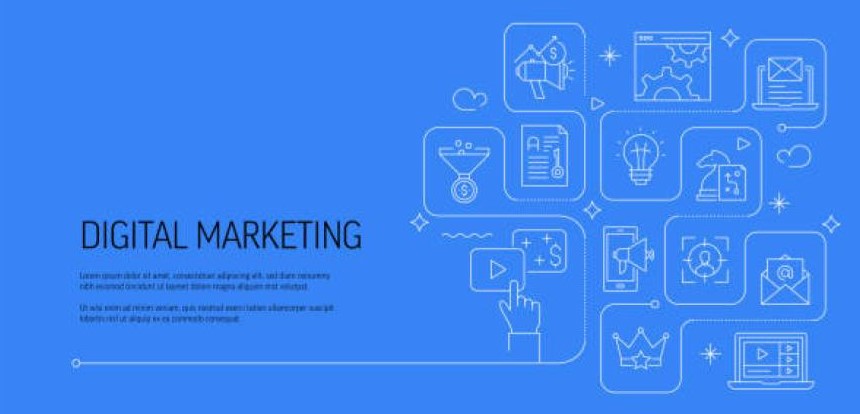Building a strong brand is crucial for success in today’s highly competitive business landscape. Brands are not just about logos and slogans; they represent a business’s values, personality, and reputation. As consumers become more discerning and demanding, traditional marketing methods may no longer be as effective in capturing their attention. In this context, collaborative brand partnerships have emerged as a powerful marketing tool that can help businesses amplify their brand presence, expand their reach, and achieve strategic marketing goals. Today, let’s examine why collaborative brand partnerships are a compelling marketing strategy and how they can drive business success.
What are Collaborative Brand Partnerships?
Collaborative brand partnerships, also known as co-branding or brand collaborations, involve two or more brands coming together to create a joint marketing campaign or product that leverages the strengths of each brand. These partnerships can take various forms, including joint advertising campaigns, co-branded products or services, cross-promotions, and shared events or activations. Collaborative brand partnerships can occur between brands within the same industry or across different industries, ranging from local, small-scale collaborations to global, high-profile partnerships.
Collaborative brand partnerships are a concept that has been introduced previously. Brands have joined forces for decades to create unique and innovative marketing campaigns. However, with the rise of social media, e-commerce, and digital marketing, collaborative brand partnerships have gained even more traction in recent years. Brands now have unprecedented opportunities to connect with consumers through various channels and touchpoints, and collaborative brand partnerships offer a strategic approach to leveraging those opportunities.
Why Collaborative Brand Partnerships are Powerful Marketing Tools
Collaborative brand partnerships offer several distinct benefits, making them a powerful business marketing tool. Let’s delve into some of the key reasons why collaborative brand partnerships are effective in driving marketing success.
Expanded Reach and Exposure
One of the primary benefits of collaborative brand partnerships is the potential to expand reach and exposure to a broader audience. When two or more brands come together, they can pool their resources and leverage their combined customer base, followers, and fans. The brand collaboration will likely reach new audiences who may not be familiar with a particular brand. Collaborative partnerships can help brands tap into new markets, demographics, or geographies, creating buzz and excitement around the joint effort.
For example, in 2020, global fast-food giant McDonald’s and international fashion brand Travis Scott collaborated to create a co-branded meal called the “Travis Scott Meal.” The pop-culture-influenced collaboration generated widespread attention and buzz as it brought together two seemingly unrelated brands – fast food and fashion – to create a unique and limited-time offering. The partnership was promoted across various marketing channels, including social media, traditional media, and in-store signage, reaching millions of customers and fans of both brands. The campaign increased sales for McDonald’s and heightened brand exposure for Travis Scott, showcasing the power of collaborative brand partnerships in expanding reach and exposure.
Enhanced Brand Equity and Perception
Collaborative brand partnerships can also enhance brand equity and perception. Brand equity is the intangible value consumers place on a brand’s goods or services. Collaborative brand partnerships can positively impact brand equity by associating a brand with another reputable and complementary brand, transferring positive brand attributes and values.
When two brands collaborate, they can tap into each other’s strengths and expertise to create a unique, differentiated offering that resonates with consumers. This can result in a positive perception of the brands involved, as consumers may perceive the partnership as innovative, creative, and customer-centric.
Collaborative brand partnerships can also create a halo effect, where the positive attributes of one brand rub off on the other, leading to improved brand perception and credibility.
For example, the collaboration between tech giant Apple and luxury fashion brand Hermès to create a co-branded collection of Apple Watch bands resulted in a premium and stylish product that appealed to tech-savvy consumers and fashion-conscious individuals. The collaboration elevated the perception of both brands, with Apple being associated with luxury and fashion and Hermès being associated with innovation and technology. The partnership increased sales and brand exposure and enhanced brand equity for both Apple and Hermès.
Increased Innovation and Creativity
Collaborative brand partnerships can foster innovation and creativity by bringing together diverse perspectives, ideas, and expertise. When brands collaborate, they can leverage their unique strengths, capabilities, and insights to create something new and exciting that may not have been possible individually. This can lead to the development of innovative products, services, or marketing campaigns that capture the attention and interest of consumers.
Collaborative brand partnerships also encourage out-of-the-box thinking and experimentation as brands strive to create a differentiated offering that stands out in the market. The collaborative nature of these partnerships allows for brainstorming, ideation, and co-creation, resulting in fresh and novel concepts that can captivate consumers and create a buzz in the market.
For example, the collaboration between luxury car brand Aston Martin and renowned British fashion house Burberry to create a unique and limited-edition Burberry-themed Aston Martin car exemplified the power of collaborative brand partnerships in driving innovation and creativity. The collaboration resulted in a one-of-a-kind luxury car that combined both brands’ design elements and aesthetics, creating a truly unique and eye-catching product that garnered widespread attention and media coverage.
Cost-effective Marketing Strategy
Collaborative brand partnerships can also be a cost-effective marketing strategy, as brands can share the costs and risks of marketing campaigns or product development. By pooling their resources, brands can achieve more significant marketing impact and exposure without individually investing in large marketing budgets.
For instance, joint advertising campaigns can be more cost-effective as brands can share the costs of media placements, production, and creative development. Co-branded products or services can also result in cost savings, as brands can share the costs of research and development, production, and distribution.
This can be particularly beneficial for smaller or local brands with limited marketing budgets who want to amplify their brand presence and reach.
Collaborative brand partnerships can also provide access to new markets or distribution channels without extensive investments. For example, a local boutique hotel brand could partner with a global travel agency to tap into the agency’s international customer base and distribution channels, gaining exposure to new markets without establishing a physical presence in those markets. This can result in cost savings and increased market access for both brands.
Strengthened Consumer Engagement
Collaborative brand partnerships can strengthen consumer engagement by creating unique and memorable consumer experiences. When brands collaborate, they can develop joint events, activations, or experiences that provide value and excitement to consumers, leading to increased engagement and loyalty.
For example, the collaboration between beverage giant Coca-Cola and fashion retailer H&M to create a co-branded fashion collection resulted in fashion events, pop-up shops, and social media campaigns that engaged consumers and created a buzz. The collaboration provided consumers with a unique experience, as they could interact with both brands in a new and exciting way, resulting in increased consumer engagement, brand loyalty, and sales.
Collaborative brand partnerships offer user-generated content (UGC) and social media engagement opportunities. When brands collaborate, they can encourage consumers to share their experiences, opinions, or stories related to the partnership on social media, resulting in increased user-generated content and
social media mentions. This can amplify the reach and visibility of the partnership as consumers share their excitement and enthusiasm with their networks.
Expanded Customer Base
Collaborative brand partnerships can help brands expand their customer base by tapping into each other’s customer segments and reaching new audiences. When brands collaborate, they can leverage their respective customer bases and cross-promote each other, exposing their brand to a wider audience and potentially acquiring new customers.
For example, a collaboration between a fitness apparel brand and a health food brand can help each brand reach new customers. The fitness apparel brand can promote the partnership to its customers. In contrast, the health food brand can do the same to its customers, resulting in cross-promotion and potential customer acquisition from each other’s customer base. This can increase brand exposure, customer engagement, and sales.
Enhanced Brand Differentiation
In a competitive market, brand differentiation is crucial to stand out and capture consumers’ attention. Collaborative brand partnerships can provide a unique and differentiated offering that differentiates brands.
When brands collaborate, they can create a joint product or service that combines their unique capabilities, expertise, and values, resulting in a differentiated offering that competitors cannot replicate. This can create a unique selling proposition (USP) for the partnership and set it apart from other offerings in the market.
A perfect example of this is the collaboration between luxury fashion brand Louis Vuitton and streetwear brand Supreme which resulted in a unique and highly sought-after collection that combined the luxury and craftsmanship of Louis Vuitton with the edgy and urban aesthetics of Supreme. The collaboration created a differentiated offering in the market, attracting consumers interested in the combination of luxury and streetwear and setting the partnership apart from other fashion collaborations.
Opportunity for Long-term Partnerships
Collaborative brand partnerships can also pave the way for long-term partnerships between brands. When brands collaborate successfully, they can build trust, mutual respect, and a strong working relationship, which can lead to further collaboration opportunities in the future.
Long-term brand partnerships can benefit both brands, as they can leverage the success and brand equity generated from the initial collaboration to continue creating value for their consumers and achieving their business objectives. Long-term partnerships also allow brands to build on the momentum and loyalty generated from the initial collaboration, resulting in sustained brand exposure, customer engagement, and sales.
For example, the partnership between sports brand Nike and technology company Apple, which started with a collaboration on a running app and later expanded to co-branded products such as the Nike+ Apple Watch, has continued for several years, resulting in a successful and long-term partnership that has brought value to both brands and their consumers.
Recap
Collaborative brand partnerships are a powerful marketing tool that can provide numerous benefits to brands. From increased brand exposure and credibility to enhanced innovation and creativity, cost-effective marketing strategies, strengthened consumer engagement, expanded customer base, enhanced brand differentiation, and opportunities for long-term partnerships, collaborative brand partnerships can be a win-win for brands.
However, it’s essential for brands to carefully choose their collaborative partners and ensure that the partnership aligns with their brand values, objectives, and target audience. Clear communication, shared goals, and mutual benefits are essential to successful brand collaborations. When done right, collaborative brand partnerships can create exciting and memorable consumer experiences, drive business growth, and unlock new opportunities for brands to thrive in a competitive market.
Keetria is an entrepreneur, wellness advocate, and brand strategy coach for creatives & entrepreneurs with 16 years of public relations expertise working with some of the world’s leading brands, startups, media personalities, and entertainers. If you want to work together, don’t hesitate to reach out!



























